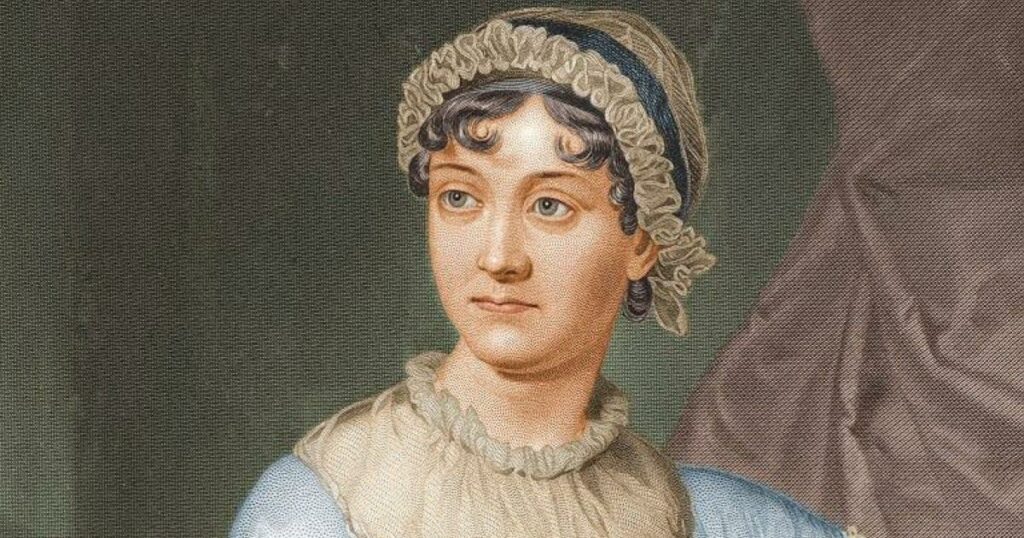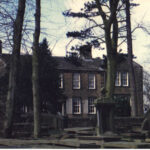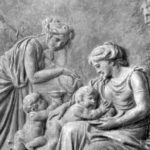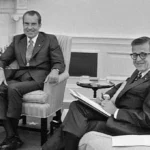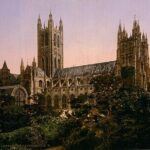Blog Post
Jane Austen’s abolitionist brother
By Jonathon Van Maren
For years, the history of abolitionism has been one of my keenest interests, especially as it has informed my work in the pro-life movement. The first chapter of my 2017 book Seeing is Believing: Why Our Culture Must Face the Victims of Abortion detailed the tactics used by abolitionists to confront the public with the truth about slavery, and over the years I have amassed an eclectic collection of artifacts—an original “Am I Not A Man and a Brother” medallion from the Anti-Slavery Society; letters from William Wilberforce and Thomas Clarkson; an early edition of William Lloyd Garrison’s The Liberator; Hannah More’s autograph; a scribbled note from Harriet Beecher Stowe, and even a copper manila, the currency used to purchase slaves on the African coast.
Thus, I was fascinated by the recent discovery that there is a connection between Jane Austen and British abolitionism. I’ve always loved Austen’s work (although my wife is the bigger fan) but was unaware that her brother was a part of the anti-slavery movement. According to Devoney Looser, author of The Making of Jane Austen and a professor at Arizona State University, the Reverend Henry Thomas Austen attended the 1840 World Anti-Slavery Convention in London. The slave trade had been abolished in the British Empire after two decades of work by Wilberforce and his colleagues in 1807; slavery itself had followed in 1833, with nearly a million slaves being freed.
In 1839, the British and Foreign Anti-Slavery Society was founded, and its first major event was the 1840 convention. There were 500 delegates—two hundred were British; about 50 were American; a handful were from other nations. A controversy erupted over whether women could participate as full delegates, and William Lloyd Garrison and others joined the women in the spectator’s gallery in protest when it was decided that they could not. (Garrison took the African American abolitionist Charles Lenox Remond with him—both are mentioned in my letter from Clarkson to suffragette Elizabeth Pease, who was also present.) Elizabeth Cady Stanton, the pro-life feminist, accompanied her delegate husband—the two were there on their honeymoon—and it was here that she would meet Lucretia Mott, with whom she would organize the Seneca Falls Convention eight years later.
Clarkson himself was present; by this time, he was a veteran of more than half a century of abolitionist labors. So was Anne Isabella Noel Byron, commonly known as Lady Byron—a mathematician and wife of the poet Lord Byron. Author David Turnbull, poet John Greenleaf Whittier, and politician Isaac Winslow, grandson of the Edward Winslow who arrived in Plymouth on the Mayflower, were in attendance along with scores of clergy, parliamentarians, businessmen, physicians, and men of letters. Austen’s name is not on the official lists of attendees, and so Looser says she was “stunned” to discover that he had been present. George Austen, the family patriarch, had been tied a West Indian sugar plantation, but “the family’s commitments and actions changed profoundly from known complicity in colonial slavery to previously unnoticed anti-slavery activism.”
While Jane Austen has been subjected, in recent years, to close examination for any links to slavery, there are only a few discernable connections. She references slavery in Mansfield Park and abolitionism in Emma, and although she is not considered to have been an active participant in these debates—these mentions are incidental—she did note in her letters that she loved the writings of Thomas Clarkson, one of the most prominent abolitionists of her day. Clarkson, of course, would later be the senior abolitionist at the conference attended decades after her death by her brother, Henry. “We know that she read and cared about issues of race and racial injustice,” Looser noted.
Henry Austen, who died a decade after the convention, was a militia officer, clergyman, and banker. He married his cousin Eliza in 1797 after her first husband was killed during the French Revolution’s Reign of Terror; she died in 1813. After his father’s passing, Henry helped his brothers care for his mother and sisters—Henry’s connections helped in the promotion of Jane’s work, of which he was a careful editor and enthusiastic promoter. He was, by most accounts, her favorite brother, and is mentioned frequently in her letters. She nursed him back to health during a dangerous illness, and he was at her side during her own long sickbed in 1817, which eventually led to her death. He was one of only three people listed in her will.
The discovery that the Rev. H.T. Austen sat as one of two delegates to the World Anti-Slavery Convention from Colchester understandably provoked much excitement in literary circles. Jane’s reading of Clarkson and her brother Francis Austen’s diary comment noting that it was regrettable that slavery “should be found to exist in countries dependent on England or colonized by her subjects” have been long known; that an Austen was present at this momentous event in abolitionist history was not. Looser discovered this activism when coming across the fact that Henry referred to himself as the Rev. H.T. Austen for much of his public work and it was, Looser says, a welcome revelation.
“Henry became a next-generation Austen publicly supporting a political commitment to abolish slavery across the globe.” Sometimes fact truly is greater than fiction.


